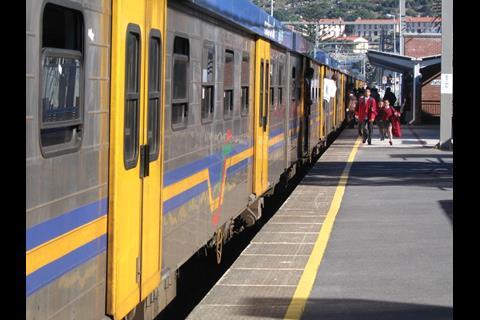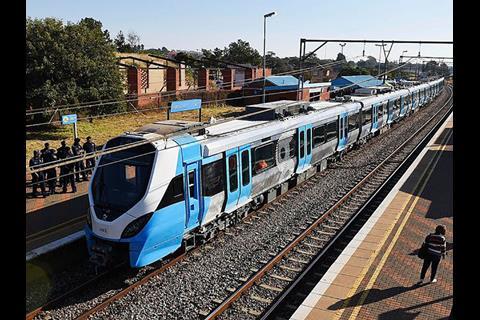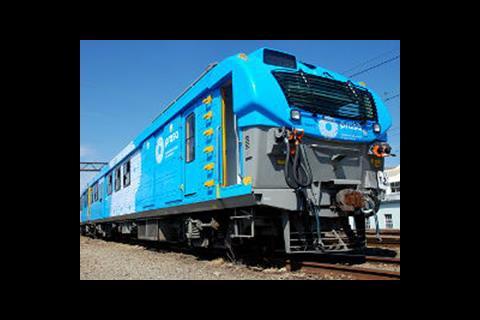SOUTH AFRICA: The future of the 2 300 route-km network operated by Passenger Rail Agency of South Africa is in grave doubt amid a spiralling safety crisis that has seen the national rail regulator request suspension of the operator’s licence.
The Rail Safety Regulator suspended PRASA’s right to operate on October 4, the day after a collision between two Metrorail-branded commuter trains at Kempton Park northeast of Johannesburg left 320 people injured. RSR gave PRASA 48 h to cease its entire operation. However, the following day PRASA successfully applied to the High Court in Pretoria for a stay of execution; a further court hearing was due to begin on October 11.
PRASA operates a complex network of suburban passenger services across five regions, plus a handful of Shosholoza Meyl long-distance trains. Its busiest and largest network is in Gauteng province, serving Johannesburg and Pretoria, while it also manages its own infrastructure around Cape Town and Durban. Elsewhere, including in East London and Port Elizabeth, it runs over infrastructure owned by Transnet Freight Rail.
A deepening crisis
The regulator’s intervention is the latest flare-up in a deepening crisis that has seen PRASA’s ridership almost halve from 540 million passengers per year in 2013-14 to just 269 million in 2017-18. Even before this precipitous decline, PRASA was battling a complex legacy of under-investment, especially in its electrified suburban networks, and wider societal challenges. Serving some of the poorest urban areas of South Africa, PRASA has long had a reputation as a railway that few visitors to the country would dare to use.
Sadly, this toxic mix is becoming more potent still, as PRASA Chair Khanyisile Kweyama laid bare at a hearing of the parliamentary Portfolio Committee on Transport on October 9. No fewer than 1 496 vehicles were vandalised in 2017-18, she reported, while arson attacks on stations and trains had cost the operator R636m over the past four years.
Its serviceable Metrorail rolling stock fleet has also declined from 288 trainsets to 200 in the same timeframe. Although arson on the railway is not a new phenomenon, PRASA suggested that the trend was worsening, with more than two-thirds of all incidents affecting the region around Cape Town.
There have been reports of trains being hijacked and staff attacked, and drivers on some routes now insisting on armed guards accompanying them before they agree to operate trains. PRASA temporarily suspended all operations in KwaZulu-Natal in September after a spate of violent attacks on drivers.
During the hearing, Kweyama suggested that ‘the root cause’ of the surge in antisocial behaviour was frustration among commuters over delays and cancellations. She admitted that there was almost no real-time information provided to Metrorail passengers, and PRASA rarely uses its Twitter feed to offer disruption alerts. Other problems include a slew of management vacancies and the fall-out from wider government corruption scandals.
Serious accidents remain rife. Prior to the incident at Kempton Park in early October, this year had seen accidents at Geldenhuys in East Rand (216 injuries) and Booysens (112 injured). Manual supervision of train dispatch and life-expired mechanical signalling has been cited as the principal cause in many of these cases, with theft and damage of signalling cables still a widespread problem across the PRASA network.
It is clear that RSR has not regarded PRASA as a safe operation in recent times. In its 2017 State of Safety Report, the regulator said it posed ‘the greatest threat’ to personal safety on the South African railway. In revoking its safety approval in October, RSR added that PRASA ‘cannot demonstrate that it has the ability, commitment and resources to assess properly and control effectively the safety risks arising from its railway operations’.
New dawn fades
PRASA’s slide to the verge of shutdown is all the more striking because it comes against a backdrop of a hugely ambitious investment programme covering both infrastructure and rolling stock.
In 2013, it launched one of the largest single fleet renewals programmes anywhere in the world, placing an order worth R51bn with the Alstom-led Gibela consortium for the supply of 580 six-car X’trapolis Mega EMUs. Deliveries are due to continue until the late-2020s. Gibela told Railway Gazette on October 11 that 18 trains are in revenue service mainly on the Pienaarspoort – Johannesburg route.
On the infrastructure side, investment in train control has been recognised as a priority, with resignalling work packages being awarded on a regular basis since 2010. An integrated control centre covering the Gauteng Metrorail network opened in Kaalfontein in October 2015, marking a significant milestone in enhancing traffic management.
However, it is unclear how much of the network has been recontrolled to date. The Gauteng Nerve Centre was also intended to serve as a central hub for passenger information provision. At the parliamentary hearing on October 9, PRASA reported that resignalling of the Gauteng network with electronic interlockings was ‘72% complete’, only for committee members to remind the company that this was a decline from the 80% figure it had quoted four years before.
Back in mid-2016, then-PRASA Chairman Dr Popo Molefe committed the operator to a R172bn infrastructure investment programme, which would include roll-out of communications-based train control based on ETCS. This would be ‘adapted to local conditions’, he said. PRASA had told Railway Gazette in 2014 that it hoped to deploy a train control system that would not require balises or extensive use of cabling, thereby mitigating the risk of theft and vandalism. Industry insiders report that PRASA called tenders in 2015 for the supply of ETCS Level 2 for its networks in Gauteng, KwaZulu-Natal and Cape Town, but so far no contracts have been awarded.
Key objectives of the signalling programme included the provision of automatic train protection, bidirectional running for operational flexibility, enhanced telecoms coverage, and a reduction in headways from 15 min under mechanical signalling to 2½ min.
Today, such a vision seems a distant prospect. As one local observer comments, even if the enhancements to rolling stock and infrastructure agreed over recent years do come to fruition, it is far from certain if PRASA will have many passengers left to welcome them.




















